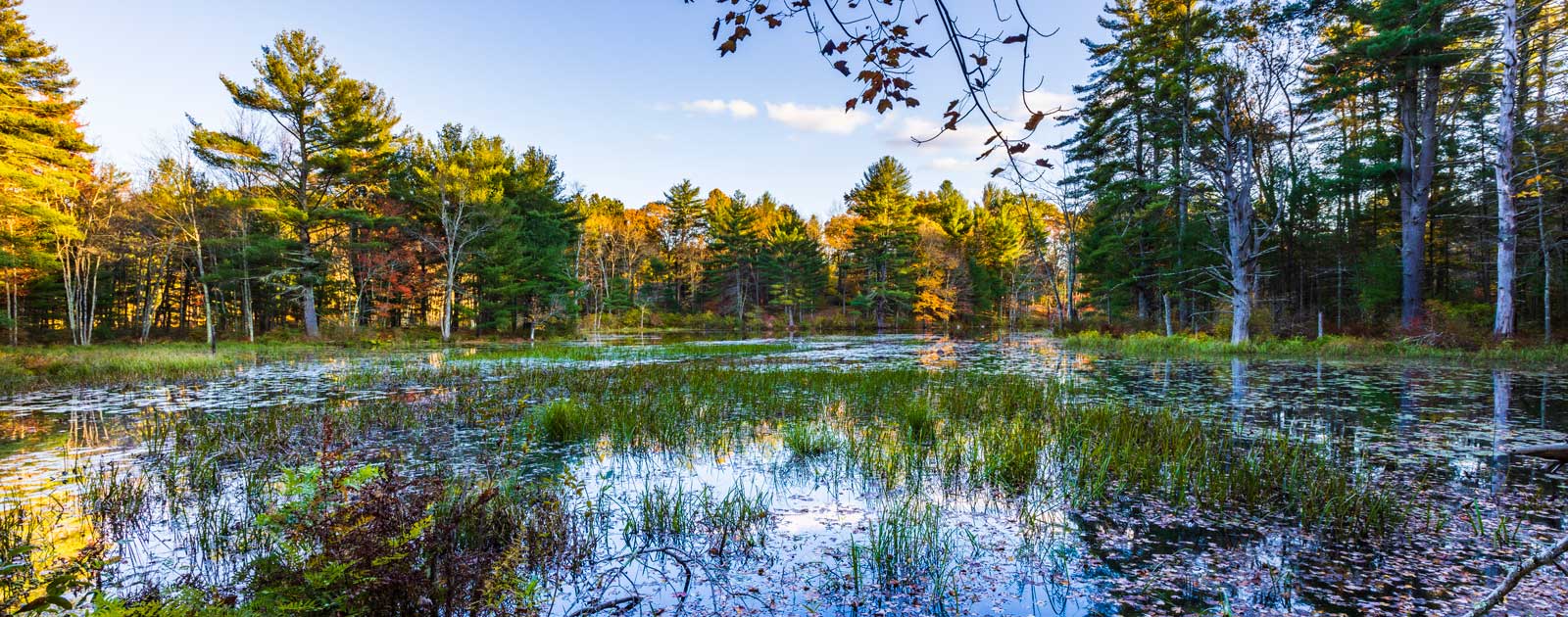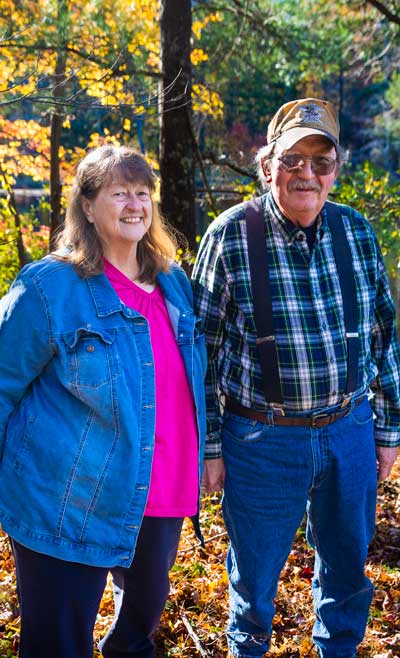Written by David Johnson
Photographed by Jerry Monkman
The Killams love their land, a site where so many memorable experiences took place over the years. And now through a conservation easement with SELT, they have enshrined the tales of those memories forever
When Dean Killam was a child, he built a fully functional hot shower in his backyard using spare parts. Not much of a surprise, as he would go on to have a successful career as an engineer. But beyond those early moments of rustic fabrication, it was the venue where this tinkering took place that left a more indelible mark.
Because the word “backyard” does a disservice to where Dean gallivanted during his formative years. Acres of beautiful Atkinson woodlands, hugging the bank of the Hog Hill Brook – this is where Dean called home as a kid. After four years at UNH, followed by a stretch of post-graduate independent living that was leading him to Vermont to live with friends, he was beckoned back home.
He was made an offer by his family he couldn’t refuse: a slice of property, complete with a ramshackle cottage, he could call his own. Hard to say no to that when you’re a young, independent guy who grew up playing in that dirt and creating stories to tell into the future. Like that time he was camping out, deep in the woods behind the house. He was roused in the middle of the night by a strange presence near his sleeping bag. As Dean rummaged about the tent, he found some mysterious animal had dug underneath his tent and began chowing down on whatever junk food Dean had with him. He didn’t come face to whiskers with the critter, but it certainly left an imprint on him.
As it turns out, it’s not just the allure of potato chips in a child’s tent that attracts the critters, it’s the resource-rich geography that makes up the Killam property – and why it ultimately earned the attention of SELT’s land conservation efforts.
On October 13, 2022, Dean Killam’s precious place, filled with natural resource wonder and evergreen memories, was protected forever.
A CONSERVATION CORRIDOR
The Killam property first hit SELT’s radar when Sue Killam reached out in late 2019 about their interest in donating a conservation easement on a portion of their land. This inquiry immediately resonated, due in no small part to its location in Atkinson. One of southern New Hampshire’s many communities facing high development pressures, Atkinson is a desirable town with proximity to the Seacoast as well as the Massachusetts border.
“This was such a generous offer considering the Killams could possibly receive a generous payout from a developer,” says Duane Hyde, SELT’s Land Conservation Director. “But development pressures alone don’t make a good conservation project, there are so many good natural resource values to the property and the forest is in remarkably good condition thanks to the sound management practices by the Killams.”
But what really intrigued SELT the most initially? The Killam property lies within a “Connect the Coast” wildlife connectivity corridor. “Connect the Coast,” a study and report that resulted from the collaboration of wildlife biologists, ecologists, and land trusts and was spearheaded by The Nature Conservancy provides the data to guide strategic land conservation efforts to continue to provide for wildlife movement between large blocks of habitat.
“The importance of the Killam easement is that it protects part of a major wildlife corridor that follows Hog Hill Brook," said Paul Wainwright, Chair of the Atkinson Conservation Commission. "It serves as an important “missing jig saw puzzle piece” along a corridor that has conserved lands both to the north and the south.”
These contiguous corridors are critical to sustain a diverse Seacoast wildlife population. All the wildlife corridors identified in “Connect the Coast” are regionally significant, but those in highly developed communities or communities facing high development pressures, are particularly important given the opportunity can be fleeting to conserve these important places.
“The Killams’ property is extremely important for wildlife corridor protection,” says Duane. “The Connect the Coast priorities are important for the sustainability of our at-risk wildlife and the fact that Dean and Sue Killam were so generous to donate an easement on this land represents one of those too-good-to-be-true projects.”
PIECE OF LAND, PEACE OF MIND
The project almost didn’t come true. Following a challenging family situation in the ‘90s, the property’s future was in flux. There wasn’t much agreement among different family members on what to do with it and things grew tense. It wasn’t until a tragic near-fatal accident that left Dean hospitalized that things changed. From this near tragedy grew family discussion and agreement on the future of the land.
“I was sitting in a waiting room on the fifth floor of Beth Israel Hospital, and I was thinking he was not going to make it through the night,” Sue says. “So, I started calling his family and they came down and, literally, this horrible situation glued them back together.”
And thus, healing thereby manifested in two ways: 1) the Killam family was able to find some restoration and reunification and 2) Dean began a long, arduous road to recovery. Even today, the aftereffects of the head injury still linger as Dean’s short-term memory recall is a challenge.
But those memories of decades past are still vivid, and Dean is quick with the anecdotes of that magic he made happen in that glorious, wooded playground. Those memories are now hewn into the land, inscribed when pen was put to paper on October 13 and the conservation easement to SELT was officially signed and sealed.
“If I sat on my deck on my property and looked across that pond and saw houses being built there, it would drive me nuts,” Dean says. “Now I know it will stay open, long after I'm gone.”
Dean and Sue are content to know that their special place is conserved forever – the place where they were married, the place where they have spent countless evenings on the deck, watching all manner of wild creatures move through the woods beyond.
Special thanks to the Atkinson Conservation Commission for their support of the project as well as the New Hampshire Moose Plate program, and to Dean and Sue Killam for their generous gift of the conservation easement.


